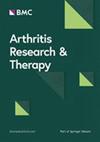Associations between the meniscal lesion parameters and knee joint structures and symptoms in patients with symptomatic knee osteoarthritis
IF 4.6
2区 医学
Q1 Medicine
引用次数: 0
Abstract
To investigate cross-sectional associations between meniscal lesion parameters and knee joint structures and symptoms in patients with symptomatic knee osteoarthritis (KOA). A total of 102 subjects with symptomatic KOA were included in this study. Coronal magnetic resonance imaging was used to measure the meniscal parameters including the mean distance from medial to lateral meniscal lesions (Mean(MLD)), the mean value of tibial plateau width (Mean(TPW)) and the mean of the relative percentage of the medial to lateral meniscal lesions distance (Mean(RMLD)). The knee structural abnormalities and symptoms included Kellgren-Lawrence grade (KLG), cartilage volume, cartilage defects, bone marrow lesions (BMLs), joint space narrowing (JSN), Western Ontario and McMaster Universities Osteoarthritis Index (WOMAC), pain, stiffness and physical dysfunction. In multivariate analyses, Mean(MLD) and Mean(RMLD) were significantly associated with KLG and were more efficient than cartilage volume and WOMAC in indicating the presence of KOA. The Mean(MLD) was significantly and negatively associated with total cartilage volume [β, 95%CI: -0.008(-0.012, -0.003)], medial tibial joint (MT) cartilage volume [β, 95%CI: -0.012(-0.017, -0.007)] and lateral tibial (LT) cartilage volume [β, 95%CI: -0.006(-0.011, -0.001)], and had positively associations with lateral tibiofemoral joint (LTFJ) cartilage defects, medial tibiofemoral joint (MTFJ) cartilage defects, LTFJ BMLs, and MTFJ BMLs [ORs, 95%CI: 1.063–1.116(1.007–1.059 to 1.119–1.177)] in patients with symptomatic KOA. There were positively associations between Mean(MLD) and WOMAC score [β, 95%CI: 2.145(1.160, 3.131)] in patients with KOA. Furthermore, The Mean(RMLD) was significantly and negatively associated with total cartilage volume [β, 95%CI: -0.005(-0.008, -0.002)], MT cartilage volume [β, 95%CI: -0.008(-0.011, -0.004)] and LT cartilage volume [β, 95%CI: -0.005(-0.008, -0.001)] and had significantly and positively associations with LTFJ cartilage defects, MTFJ cartilage defects, LTFJ BMLs, and MTFJ BMLs [ORs, 95%CI: 1.046–1.086(1.008–1.044 to 1.082–1.123)] in patients with symptomatic KOA. There were positively associations between Mean(RMLD) and WOMAC score [β, 95%CI: 1.465(0.793, 2.136)] in patients with KOA. Meniscus lesion parameter values were associated with changes in knee structures and increases in knee symptoms, suggesting that meniscal lesions may contribute to symptoms and structural abnormalities in the knee and increase the risk of KOA.症状性膝骨关节炎患者半月板病变参数与膝关节结构和症状的关系
探讨症状性膝骨关节炎(KOA)患者半月板病变参数与膝关节结构和症状的横断面相关性。本研究共纳入102例有症状性KOA的受试者。采用冠状面磁共振成像测量半月板参数,包括半月板内侧到外侧病变的平均距离(mean (MLD))、胫骨平台宽度的平均值(mean (TPW))和半月板内侧到外侧病变距离的相对百分比的平均值(mean (RMLD))。膝关节结构异常和症状包括Kellgren-Lawrence分级(KLG)、软骨体积、软骨缺损、骨髓病变(bls)、关节间隙狭窄(JSN)、西安大略省和麦克马斯特大学骨关节炎指数(WOMAC)、疼痛、僵硬和身体功能障碍。在多变量分析中,Mean(MLD)和Mean(RMLD)与KLG显著相关,并且比软骨体积和WOMAC更有效地指示KOA的存在。Mean(MLD)与总软骨体积[β, 95%CI: -0.008(-0.012, -0.003)]、胫骨内侧关节(MT)软骨体积[β, 95%CI: -0.012(-0.017, -0.007)]和胫骨外侧(LT)软骨体积[β, 95%CI: -0.006(-0.011, -0.001)]呈显著负相关,与胫骨外侧股骨关节(LTFJ)软骨缺损、胫骨内侧股骨关节(MTFJ)软骨缺损、LTFJ骨密度和MTFJ骨密度呈显著正相关[ORs, 95%CI:1.063 ~ 1.116(1.007 ~ 1.059 ~ 1.119 ~ 1.177)。KOA患者的Mean(MLD)与WOMAC评分呈正相关[β, 95%CI: 2.145(1.160, 3.131)]。此外,有症状KOA患者的The Mean(RMLD)与总软骨体积[β, 95%CI: -0.005(-0.008, -0.002)]、MT软骨体积[β, 95%CI: -0.008(-0.011, -0.004)]、LT软骨体积[β, 95%CI: -0.005(-0.008, -0.001)]呈显著负相关,与LTFJ软骨缺损、MTFJ软骨缺损、LTFJ骨密度、MTFJ骨密度[ORs, 95%CI: 1.046-1.086(1.008-1.044至1.082-1.123)]呈显著正相关。KOA患者的Mean(RMLD)与WOMAC评分呈正相关[β, 95%CI: 1.465(0.793, 2.136)]。半月板病变参数值与膝关节结构改变和膝关节症状增加相关,提示半月板病变可能导致膝关节症状和结构异常,增加KOA的风险。
本文章由计算机程序翻译,如有差异,请以英文原文为准。
求助全文
约1分钟内获得全文
求助全文
来源期刊

Arthritis Research & Therapy
RHEUMATOLOGY-
CiteScore
8.60
自引率
2.00%
发文量
261
审稿时长
14 weeks
期刊介绍:
Established in 1999, Arthritis Research and Therapy is an international, open access, peer-reviewed journal, publishing original articles in the area of musculoskeletal research and therapy as well as, reviews, commentaries and reports. A major focus of the journal is on the immunologic processes leading to inflammation, damage and repair as they relate to autoimmune rheumatic and musculoskeletal conditions, and which inform the translation of this knowledge into advances in clinical care. Original basic, translational and clinical research is considered for publication along with results of early and late phase therapeutic trials, especially as they pertain to the underpinning science that informs clinical observations in interventional studies.
 求助内容:
求助内容: 应助结果提醒方式:
应助结果提醒方式:


